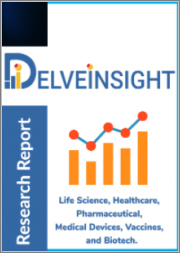
|
시장보고서
상품코드
1807126
세계의 허브 나노의약품 시장 : 유형별, 원료별, 용도별, 지역별(-2032년)Global Herbal Nanomedicines Market Research Report by Type, by Source, by Application, by Region Forecast till 2032 |
||||||
세계의 허브 나노의약품 시장 규모는 2022년 59억 8,197만 달러로 평가되었고, 예측 기간 동안 CAGR 8.55%로 안정적으로 추이할 전망이며, 2032년에는 149억 4,660만 달러에 달할 것으로 예측되고 있습니다.
허브 나노의약품은 약용 식물에서 얻은 활성 성분을 나노 크기의 캐리어를 사용하여 보다 정확하고 효율적으로 전달하는 것입니다. 이 접근법은 허브 유래 화합물의 낮은 용해도 및 급속한 분해와 같은 제약을 극복하고 안전성이 높아진 고급 치료 옵션을 제공합니다.
천연 유래 및 허브 나노의약품에 대한 수요 증가는 세계 시장 동향을 견인하는 주요 요인 중 하나이며, 특히 안전하고 효과적이며 홀리스틱한 건강 솔루션을 추구하는 소비자의 취향에 의해 뒷받침됩니다. 나노 기술은 커큐민과 레스베라트롤과 같은 피토케미칼의 섭취를 보다 효과적으로 할 뿐만 아니라, 낮은 용해성 및 낮은 생체이용률과 같은 과제에 최적의 솔루션을 제공합니다.
지역별 분석
북미는 혁신과 시장 리더의 존재로 인한 안정적인 성장을 보여줍니다. 미국은 지역 매출의 80% 이상을 차지하고 있으며 지속 가능한 식물 유래 대체품에 대한 수요가 주요 성장 요인이 되고 있습니다. 미국(19억 1,059만 달러)과 캐나다(4억 921만 달러)가 주도하는 북미 시장은 자연 요법에 대한 소비자의 기호 및 첨단 연구 능력에 힘입어 우위를 유지하고 있습니다.
유럽은 허브 의약품의 도입에 유리한 발달된 인프라 및 규제 프레임워크을 활용하고 있습니다. 독일과 영국은 소비자 채용률이 높고 이 분야에서 가장 두드러진 시장입니다. 독일(3억 9,600만 달러), 영국(2억 9,445만 달러), 프랑스(2억 5,055만 달러)가 유럽의 강한 수요를 나타내고 있으며, 규제의 뒷받침과 지속 가능한 나노의약품 솔루션의 채용 확대가 성장을 지원하고 있습니다.
아시아태평양은 다른 지역보다 빠른 속도로 성장하는 가장 역동적인 시장입니다. 이 분야에서는 인도가 최대 13.30%의 연평균 복합 성장률(CAGR)을 기록할 전망이라고 합니다. 중국(3억4,053만 달러), 일본(2억9,381만 달러), 인도(2억4,104만 달러)는 전통 의료와의 통합과 나노기술 연구 확대에 힘입어 이 지역의 급속한 상승을 보여주고 있습니다.
본 보고서에서는 세계의 허브 나노의약품 시장을 조사했으며, 시장 정의 및 개요, 시장 성장에 대한 각종 영향요인 분석, 시장 규모 추이 및 예측, 각종 구분과 지역 및 주요 국가별 분석, 경쟁 환경, 주요 기업 프로파일 등을 정리했습니다.
목차
제1장 주요 요약
제2장 시장 개요
제3장 조사 방법
제4장 시장 역학
- 성장 촉진요인
- 천연 및 허브 기반 나노의료 수요 증가
- 고령화 인구 증가
- 성장 억제요인
- 허브 나노의약품에 대한 인식 부족
- 기회
- 허브 나노의약품에 관한 진행중인 연구 및 임상시험
제5장 시장 요인 분석
- Porter's Five Forces 모델
- COVID-19가 세계의 허브 나노의약품 시장에 미치는 영향
- 허브 나노의약품 동향
제6장 세계의 허브 나노의약품 시장 : 유형별
- 개요
- 폴리머 허브 나노입자
- 고체 지질 나노입자
- 피토솜
- 나노미셀
- 자기 나노 유화형 약물 전달 시스템
- 나노 섬유
- 기타
제7장 세계의 허브 나노의약품 시장 : 원료별
- 개요
- 인삼
- 심황
- 알로에 베라
- 생강
- 기타
제8장 세계의 허브 나노의약품 시장 : 용도별
- 개요
- 암
- 심혈관 질환
- 신경질환
- 기타
제9장 세계의 허브 나노의약품 시장 : 지역별
- 개요
- 북미
- 미국
- 캐나다
- 유럽
- 독일
- 프랑스
- 영국
- 이탈리아
- 스페인
- 기타
- 아시아태평양
- 중국
- 인도
- 일본
- 호주
- 한국
- 기타
- 세계 기타 지역
- 중동 및 아프리카
- 남미
제10장 경쟁 구도
- 시장 점유율 분석
- 경쟁 대시보드
- 공개 기업의 주식 : 요약
- 비교 분석 : 주요 기업의 재무
제11장 기업 프로파일
- EVOLU RESEARCH
- CODEAGE LLC
- NUTRIHERBS
- BASIC BRANDS INC.
- HERBALIFE INTERNATIONAL OF AMERICA, INC.
- INDENA SPA
- NANOCEUTICAL SOLUTIONS
- VIBDRUGS BIOSCIENCES
- ONE PLANET NUTRITION
- OIC NEW
제12장 데이터 인용
AJY 25.09.16Global Herbal Nanomedicines Market Research Report by Type (Polymeric Herbal Nanoparticles, Solid Lipid Nanoparticles, Phytosomes, Nano-Micelles, Self-nano Emulsifying Drug Delivery System, Nanofibers, Others), by Source (Ginseng, Turmeric, Aloe Vera, Ginger, Others), by Application (Cancer, Cardiovascular Diseases, Neurological Disorders, Others), by Region (North America, Europe, Asia Pacific, Rest of the World) Forecast till 2032
Industry Overview
The market was estimated to be USD 5,981.97 million in 2022 and is expected to reach a value of USD 14,946.60 million by 2032, growing steadily at a CAGR of 8.55% by the end of the forecast period. Herbal nanomedicines involve the use of nano-sized carriers to deliver active ingredients from medicinal plants with greater precision and efficiency. This approach helps overcome limitations like poor solubility or rapid degradation of herbal compounds, offering advanced treatment options with improved safety.
The rising demand for natural and herbal nanomedicines is one of the major drivers of the global market trend, which is especially confirmed by the consumer preference for safe, effective, and holistic health solutions. Nanotechnology not only makes the intake of phytochemicals such as curcumin and resveratrol more effective but also gives a perfect solution to the problem of their poor solubility and low bioavailability.
Major Company Development
Through the use of research and production technologies, the company's objective will be to revamp the performance of the bioactive ingredient while preserving quality in natural innovation. This INDENA approach makes it possible for the company to create healthcare customer value propositions that stand out, while also achieving a strong position among the nutraceutical world partners.
Key Players
Major competitors in the global herbal nanomedicines market are Oneplanet Nutrition, Indena S.p.A., Codeage LLC, Nutriherbs, Basic Brands Inc., Nanoceutical Solutions, Vibdrugs Biosciences, OIC New, Herbalife Ltd, and Evolu Research.
Report Attribute Details
Market Size 2022 USD 5,981.97 Million
Market Size 2032 USD 14,946.60 Million
CAGR (2023-2032) 8.55%
Base Year 2022
Market Forecast Period 2023-2032
Industry Segmentations
By Type: Polymeric Herbal Nanoparticles - 8.78%, Solid Lipid Nanoparticles - 9.36%.
By Source: Ginseng - 8.95%, Turmeric - 9.71%.
By Application: Cancer - 9.86%, Cardiovascular Diseases - 7.41%.
Regional Analysis
North America represents stable growth where the trend is fueled by innovation and the presence of market leaders. The U.S. contributes over 80% of regional sales, where demand for sustainable plant-based alternatives is the main driver. Led by the U.S. (USD 1,910.59 million) and Canada (USD 409.21 million), North America dominates the market, supported by consumer preference for natural therapies and advanced research capabilities.
Europe is leveraging its well-developed infrastructure and regulatory frameworks that are favorable for herbal medicine integration. Germany and the UK, with their high consumer adoption rates, are the most prominent markets in this regard. Germany (USD 396.00 million), the UK (USD 294.45 million), and France (USD 250.55 million) highlight Europe's robust demand, fueled by regulatory support and growing adoption of sustainable nanomedicine solutions.
The Asia-Pacific is the most dynamic market that has been growing quickly than the others. It is said that India will have the largest CAGR of 13.30% in this sector. China (USD 340.53 million), Japan (USD 293.81 million), and India (USD 241.04 million) underscore APAC's rapid rise, supported by traditional medicine integration and expanding nanotechnology research.
Emerging markets in South America and the Middle East are boosting regional demand through investments in healthcare modernization. Brazil and GCC countries show promise for herbal nanomedicine adoption. Still, regulatory uncertainty and limited infrastructure restrain overall market acceleration.
TABLE OF CONTENTS
1 EXECUTIVE SUMMARY
2 MARKET INTRODUCTION
- 2.1 DEFINITION
- 2.2 SCOPE OF THE STUDY
- 2.3 RESEARCH OBJECTIVE
- 2.4 MARKET STRUCTURE
3 RESEARCH METHODOLOGY
- 3.1 OVERVIEW
- 3.2 DATA FLOW
- 3.2.1 DATA MINING PROCESS
- 3.3 PURCHASED DATABASE:
- 3.4 SECONDARY SOURCES:
- 3.4.1 SECONDARY RESEARCH DATA FLOW:
- 3.5 PRIMARY RESEARCH:
- 3.5.1 PRIMARY RESEARCH DATA FLOW:
- 3.5.2 PRIMARY RESEARCH: NUMBER OF INTERVIEWS CONDUCTED
- 3.5.3 PRIMARY RESEARCH: REGIONAL COVERAGE
- 3.6 APPROACHES FOR MARKET SIZE ESTIMATION:
- 3.6.1 REVENUE ANALYSIS APPROACH
- 3.7 DATA FORECASTING
- 3.7.1 DATA FORECASTING TYPE
- 3.8 DATA MODELING
- 3.8.1 MICROECONOMIC FACTOR ANALYSIS:
- 3.8.2 DATA MODELING:
- 3.9 TEAMS AND ANALYST CONTRIBUTION
4 MARKET DYNAMICS
- 4.1 INTRODUCTION
- 4.2 DRIVERS
- 4.2.1 INCREASING DEMAND FOR NATURAL AND HERBAL-BASED NANOMEDICINE
- 4.2.2 GROWING GERIATRIC POPULATION
- 4.3 RESTRAINTS
- 4.3.1 LACK OF AWARENESS ASSOCIATED WITH HERBAL NANOMEDICINE
- 4.4 OPPORTUNITY
- 4.4.1 ONGOING RESEARCH AND CLINICAL TRIALS ON HERBAL NANOMEDICINE
5 MARKET FACTOR ANALYSIS
- 5.1 PORTER'S FIVE FORCES MODEL
- 5.1.1 THREAT OF NEW ENTRANTS
- 5.1.2 BARGAINING POWER OF SUPPLIERS
- 5.1.3 THREAT OF SUBSTITUTES
- 5.1.4 BARGAINING POWER OF BUYERS
- 5.1.5 INTENSITY OF RIVALRY
- 5.2 IMPACT OF COVID-19 ON THE GLOBAL HERBAL NANOMEDICINE MARKET
- 5.3 TRENDS IN HERBAL NANOMEDICINES
- 5.3.1 BENEFITS OF NANOSIZING
- 5.3.2 COMBINATION THERAPY
- 5.3.3 SAFETY AND BIOCOMPATIBILITY
- 5.3.4 CLINICAL TRIALS AND COMMERCIALIZATION
6 GLOBAL HERBAL NANOMEDICINE MARKET, BY TYPE
- 6.1 OVERVIEW
- 6.2 POLYMERIC HERBAL NANOPARTICLES
- 6.3 SOLID LIPID NANOPARTICLES
- 6.4 PHYTOSOMES
- 6.5 NANO-MICELLES
- 6.6 SELF-NANO EMULSIFYING DRUG DELIVERY SYSTEM
- 6.7 NANOFIBERS
- 6.8 OTHERS
7 GLOBAL HERBAL NANOMEDICINE MARKET, BY SOURCE
- 7.1 OVERVIEW
- 7.2 GINSENG
- 7.3 TURMERIC
- 7.4 ALOE VERA
- 7.5 GINGER
- 7.6 OTHERS
8 GLOBAL HERBAL NANOMEDICINE MARKET, BY APPLICATION
- 8.1 OVERVIEW
- 8.2 CANCER
- 8.3 CARDIOVASCULAR DISEASES
- 8.4 NEUROLOGICAL DISORDERS
- 8.5 OTHERS
9 GLOBAL HERBAL NANOMEDICINE MARKET, BY REGION
- 9.1 OVERVIEW
- 9.2 NORTH AMERICA
- 9.2.1 US
- 9.2.2 CANADA
- 9.3 EUROPE
- 9.3.1 GERMANY
- 9.3.2 FRANCE
- 9.3.3 UK
- 9.3.4 ITALY
- 9.3.5 SPAIN
- 9.3.6 REST OF EUROPE
- 9.4 ASIA-PACIFIC
- 9.4.1 CHINA
- 9.4.2 INDIA
- 9.4.3 JAPAN
- 9.4.4 AUSTRALIA
- 9.4.5 SOUTH KOREA
- 9.4.6 REST OF ASIA-PACIFIC
- 9.5 REST OF THE WORLD
- 9.5.1 MIDDLE EAST & AFRICA
- 9.5.2 SOUTH AMERICA
10 COMPETITIVE LANDSCAPE
- 10.1 INTRODUCTION
- 10.2 MARKET SHARE ANALYSIS, 2022
- 10.3 COMPETITOR DASHBOARD
- 10.4 PUBLIC PLAYERS STOCK SUMMARY
- 10.5 COMPARATIVE ANALYSIS: KEY PLAYERS FINANICAL
11 COMPANY PROFILES
- 11.1 EVOLU RESEARCH
- 11.1.1 COMPANY OVERVIEW
- 11.1.2 FINANCIAL OVERVIEW
- 11.1.3 PRODUCTS OFFERED
- 11.1.4 KEY DEVELOPMENTS
- 11.1.5 KEY STRATEGIES
- 11.2 CODEAGE LLC
- 11.2.1 COMPANY OVERVIEW
- 11.2.2 FINANCIAL OVERVIEW
- 11.2.3 PROUDCTS OFFERED
- 11.2.4 KEY DEVELOPMENTS
- 11.2.5 SWOT ANALYSIS
- 11.2.6 KEY STRATEGIES
- 11.3 NUTRIHERBS
- 11.3.1 COMPANY OVERVIEW
- 11.3.2 FINANCIAL OVERVIEW
- 11.3.3 PRODUCTS OFFERED
- 11.3.4 KEY DEVELOPMENTS
- 11.3.5 KEY STRATEGIES
- 11.4 BASIC BRANDS INC.
- 11.4.1 COMPANY OVERVIEW
- 11.4.2 FINANCIAL OVERVIEW
- 11.4.3 PRODUCTS OFFERED
- 11.4.4 KEY DEVELOPMENTS
- 11.4.5 KEY STRATEGIES
- 11.5 HERBALIFE INTERNATIONAL OF AMERICA, INC.
- 11.5.1 COMPANY OVERVIEW
- 11.5.2 FNANCIAL OVERVIEW
- 11.5.3 SERVICES OFFERED
- 11.5.4 KEY DEVELOPMENTS
- 11.5.5 SWOT ANALYSIS
- 11.5.6 KEY STRATEGIES
- 11.6 INDENA S.P.A
- 11.6.1 COMPANY OVERVIEW
- 11.6.2 FINANCIAL OVERVIEW
- 11.6.3 PRODUCTS OFFERED
- 11.6.4 KEY DEVELOPMENTS
- 11.6.5 SWOT ANALYSIS
- 11.6.6 KEY STRATEGIES
- 11.7 NANOCEUTICAL SOLUTIONS
- 11.7.1 COMPANY OVERVIEW
- 11.7.2 FINANCIAL OVERVIEW
- 11.7.3 PRODUCTS OFFERED
- 11.7.4 KEY DEVELOPMENTS
- 11.7.5 KEY STRATEGY
- 11.8 VIBDRUGS BIOSCIENCES
- 11.8.1 COMPANY OVERVIEW
- 11.8.2 FINANCIAL OVERVIEW
- 11.8.3 PRODUCTS OFFERED
- 11.8.4 KEY DEVELOPMENTS
- 11.8.5 KEY STRATEGIES
- 11.9 ONE PLANET NUTRITION
- 11.9.1 COMPANY OVERVIEW
- 11.9.2 FINANCIAL OVERVIEW
- 11.9.3 PRODUCTS OFFERED
- 11.9.4 KEY DEVELOPMENTS
- 11.9.5 SWOT ANALYSIS
- 11.9.6 KEY STRATEGY
- 11.10 OIC NEW
- 11.10.1 COMPANY OVERVIEW
- 11.10.2 FINANCIAL OVERVIEW
- 11.10.3 PRODUCTS OFFERED
- 11.10.4 KEY DEVELOPMENTS
- 11.10.5 SWOT ANALYSIS
- 11.10.6 KEY STRATEGIES



















